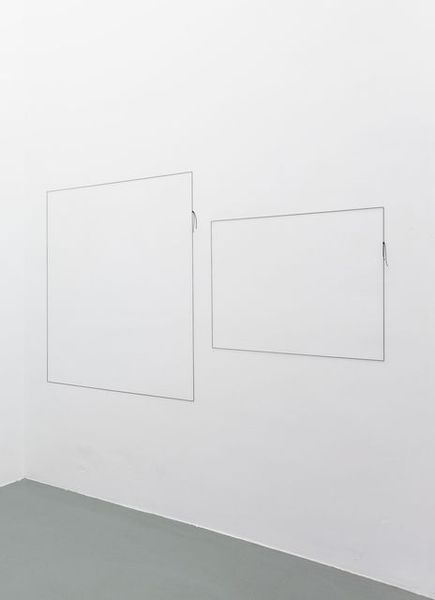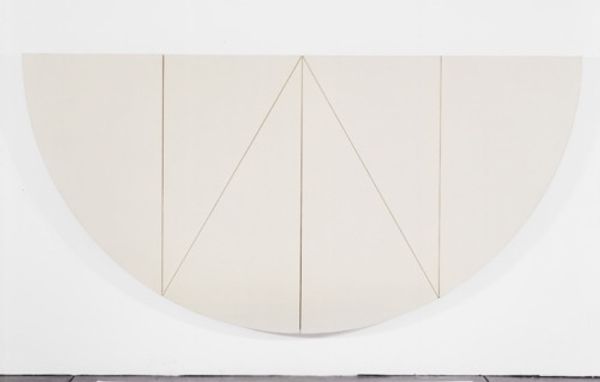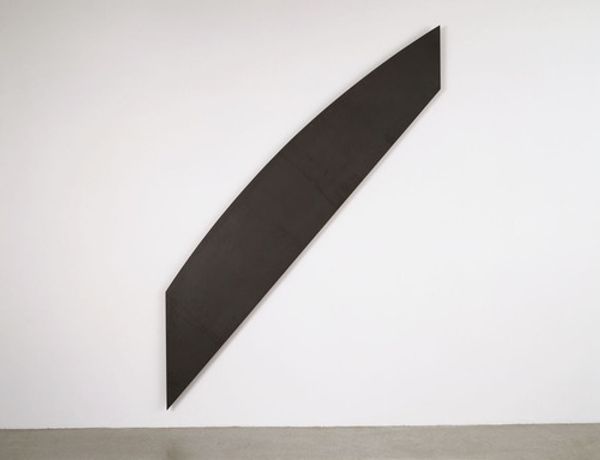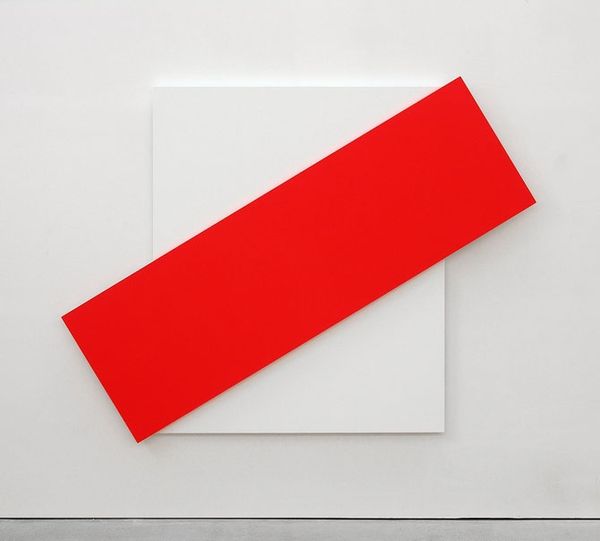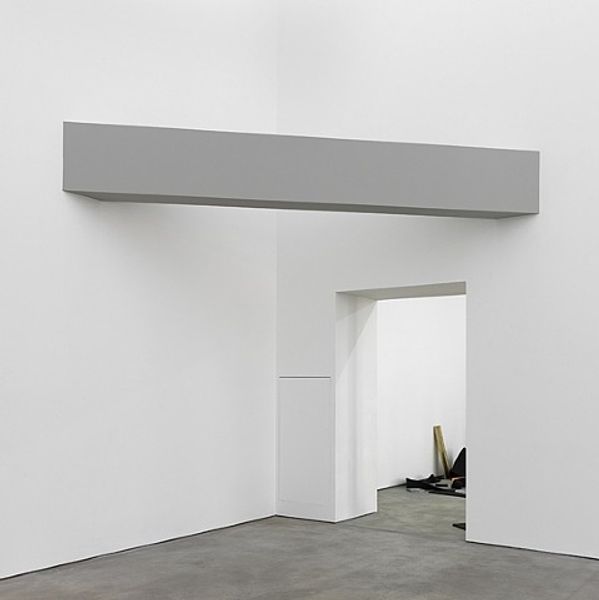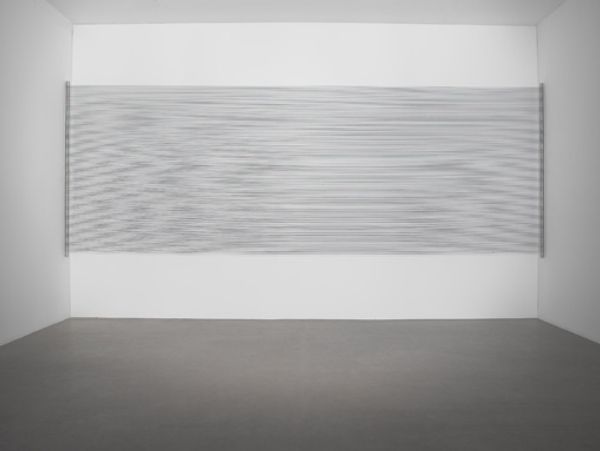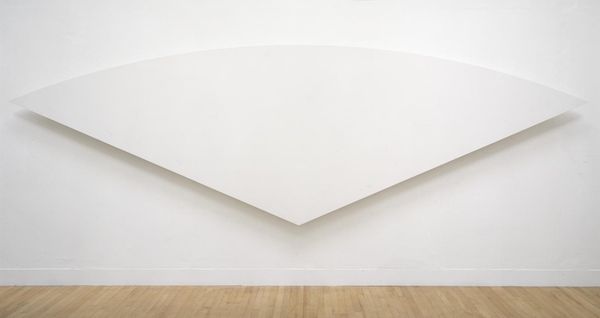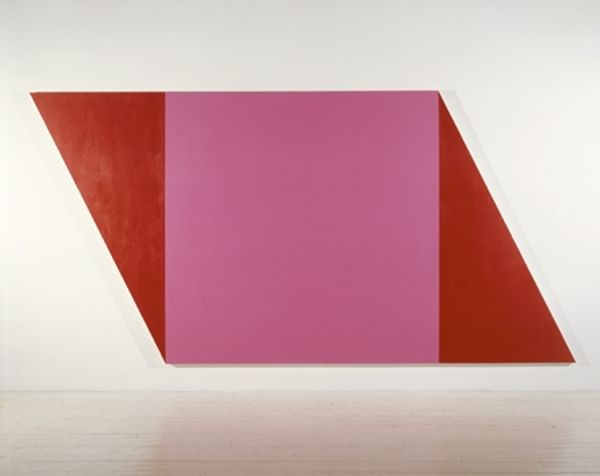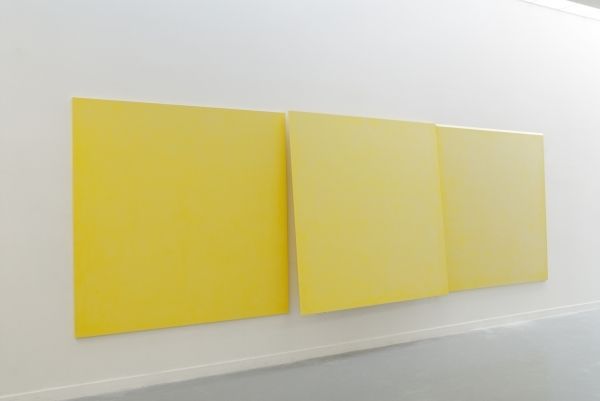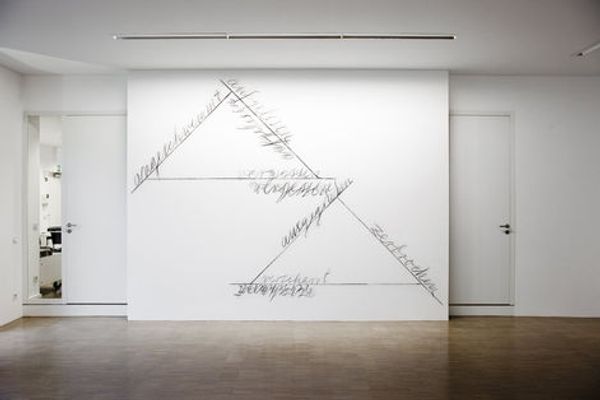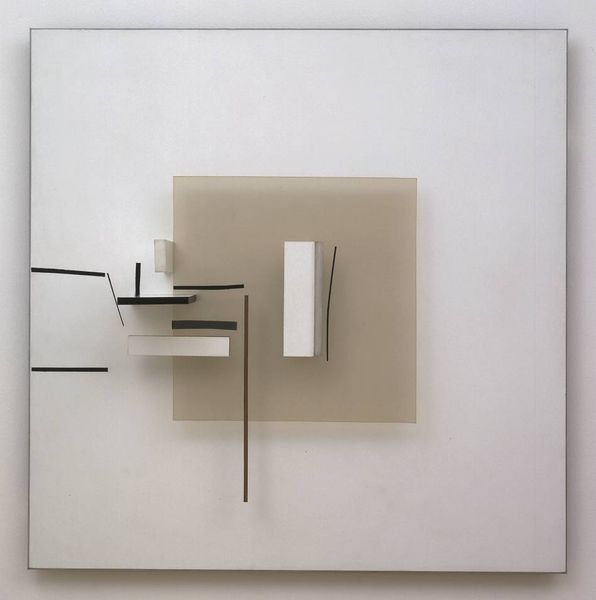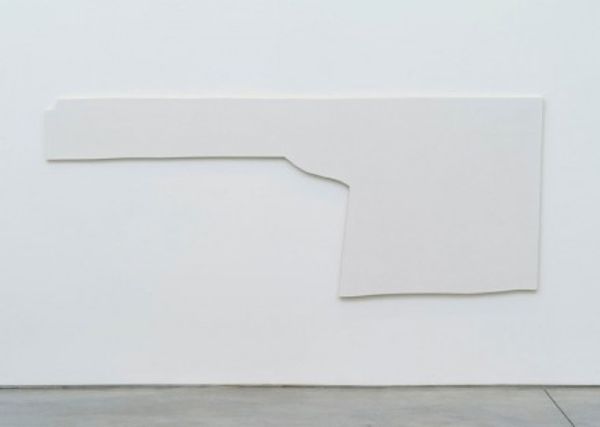
Copyright: Claude Rutault,Fair Use
Editor: So, this is Claude Rutault’s *dé-finition/méthode #496: exposition-suicide 1*, made in 2010 using acrylic paint. It’s strikingly simple—a white geometric shape against a white wall. The title feels provocative given its understated presence. How do you interpret this work, particularly considering the title? Curator: The title certainly jars against the stark minimalism, doesn't it? I think Rutault is engaging with the historical context of the gallery itself. Minimalism, especially when rendered in such an austere way, often prompts the question: “Is this art?”. The “exposition-suicide” could refer to the potential ‘death’ of the artwork, its disappearance into the white cube of the gallery space, questioning the traditional role and visibility of art within institutional settings. What do you make of the fact it is all one colour? Editor: That’s interesting! I hadn't considered the "suicide" element as a vanishing act within the gallery. I guess, the monochrome approach minimizes any visual distractions, forcing us to confront the basic elements: shape, form, and the gallery's architecture itself. Curator: Exactly. And think about the period – 2010. By then, minimalism was a well-established movement. So, Rutault is engaging in a dialogue with art history, commenting perhaps on the way that movements get commodified or even neutralised by their institutional settings. Is the 'suicide' perhaps the way minimalist artwork can fade into the background? Do we need a disruptive element to keep an artwork alive? Editor: So the disruptive element is not in the painting, but in the Title! It is the suggestion of the title that forces a dialogue. Curator: Precisely. The painting needs a prompt! Do you think the title transforms the painting, making it "alive?" Editor: I do. I came expecting something more dramatic, but now I appreciate the subtle way Rutault challenges the gallery space and minimalist traditions. The artwork’s not committing suicide; it's making the gallery complicit in the act. Thank you. Curator: The pleasure is mine. A little historical context, in addition to visual assessment can illuminate any work, from the subtle to the apparently strident.
Comments
No comments
Be the first to comment and join the conversation on the ultimate creative platform.
